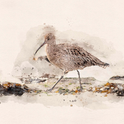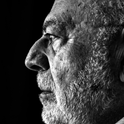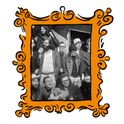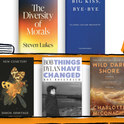Speak, Silence is the second major biography published this year about a Kafka-obsessed novelist whose central theme involves the experience of Jews in the turmoil of 20th-century history. But the two writers couldn’t be more different: Philip Roth was an American Jew, while WG Sebald was a German Catholic whose father served as an officer during the war. Both reacted against their parents’ generation—in Roth’s case, against the pieties of an immigrant culture preserving itself against assimilation, and in Sebald’s, against the Nazis, and his country’s eerie silence on its terrible recent history.
One of Roth’s virtues was his faith in candour (“Just make me interesting,” he told his biographer, who was subsequently embroiled in his own controversy over rape allegations), but one of Sebald’s was his profound sense that certain things are sacred and can only be handled with thick gloves. Which makes him harder to write about. As Carole Angier admits in her preface: “The central absence is his family life, because his widow wishes to keep this private. Without her permission, his words from privately held sources, such as certain letters, cannot be quoted, only paraphrased.” She does well with the materials available, but the gaps also mean that much of the biography is filtered through an analysis of his work.
Born in 1944, Sebald grew up in the Bavarian Alps and spent his free time swimming in the river in summer, skiing and sledding in winter. His grandfather, a retired policeman to whom he was exceptionally close, took him on long rambles through the countryside and surrounding villages. The family was poor after the war but middle class, and Sebald was one of the children clearly intended for an academic gymnasium. Later, he commented, “it seems to me… unjust, so to speak, that I was allowed to grow up in this peaceful valley; and I don’t really know how I deserved it.”
Not that his childhood was without scars. The first “big shock” of his life was “the return of his father from a prisoner-of-war camp” when Sebald was nearly three. Suddenly, the power structure at home began to shift: Sebald’s father, who weighed “little more than a hundred pounds—and was ill with gastric trouble,” eventually reclaimed his authoritarian place in the family dynamic. Along the way, he became for the young writer a symbol of Germany’s Nazi past, so that Sebald’s teenage rebellions, and vague sense of cultural unease, had a personal target.
The second great shock was the death of his grandfather. “Near the end of his own life,” Angier writes, Sebald said that it had “made a huge hole in his universe, that he had never got over it, and missed him still.” Sebald scholar Uwe Schütte argues that “his grief for his grandfather was the real one in his life and work,” for which the “victims of the Third Reich” served as “psychic cover.” This seems to Angier to go “too far,” but leads us to the third defining moment. When Sebald was 17, as Germany made its first steps towards discussing its crimes, his school class was shown a film about the liberation of Bergen-Belsen. “I never even knew what a Jew was,” his sister commented. At the time, her brother couldn’t take it in; he remembers that they all went outside to play football afterwards. “For Sebald and his friends,” Angier writes, their reaction to the film “was an early example of something his later work was largely about: a trauma that cannot be registered at the time.”
How much of the writer’s famous gloom was based on his country’s history and how much had a more personal source? Angier doesn’t have a clear answer, but the question turns her book into a search for a “figure in the carpet”—some buried clue that might help us make sense not just of the work but of his life. Structurally, this gives Speak, Silence a classic Sebaldian form. The biography circles its subject, taking in various genres along the way—travelogue, memoir and literary criticism—as the writer digs into the past, looking for the key. The pages are even, like Sebald’s own works, dotted with black-and-white photos. Angier tests the books themselves for facts—tracing their sources, working out what was true, what was made up.
“Sebald had a profound sense that certain things are sacred and can only be handled with thick gloves”
What Angier finds out is interesting on several fronts. In the first place, it’s striking how many of the stories in The Emigrants, The Rings of Saturn, Vertigo and so on are based on real people, in some cases without much fictional disguise. Sebald often pressed his mother for local gossip, which then appeared almost verbatim in the books. His mother felt particularly betrayed; she still lived among those people. Angier writes, “I came across what I would discover again and again about the models for his fictions: they were all furious.” He used (and sometimes doctored) their photographs, too, and even borrowed extensively from real diaries—without permission, acknowledgment or fair warning. (All of this makes an interesting contrast with Angier’s respectful treatment of Sebald’s own personal papers.)
He also took liberties with his literary sources, adapting lines, passages and symbols from the various writers, minor and major, who obsessed him.
Of course, this is what novelists do, though not always to the same degree—and the degree matters. Occasionally Angier overstates the equivalence between fact and fiction. “Paul Bereyter’s real name was Armin Müller,” she writes about the fictional hero of the second story in The Emigrants, who was based on Sebald’s primary school teacher. But mostly she gives a nuanced and sensitive account of the debt to his sources. Sometimes his reworking of his sources’ lives seems justified to her, sometimes he overstepped the mark; in general he could have handled these appropriations more honestly. But the ethical question is less interesting to me than what the raw materials reveal about the difference between Sebald’s vision of the world, and the world itself.
Here’s one example. Prior’s Gate, where Sebald and his wife “Clara” rent rooms above a garden descending into wilderness in the “Dr Henry Selwyn” chapter of The Emigrants, is based on a house called Abbotsford, not in Hingham but in Wymondham. Sebald had claimed in interviews that the story was real, and Angier goes to visit the owners, who knew Sebald but are initially reluctant to speak about the book. The details match: the servants’ bells in the corridor, the eccentric maid who slept in a room full of dolls, the garden with its tennis court and the great cedar tree: “All… as Sebald had described!” Apart from the fact that, her host points out, “it wasn’t at all a wilderness…” She quotes from the book: “nature ‘collapsing beneath the burden we placed upon it.’ My parents-in-law had always had gardeners, and it was a perfectly civilised place.”
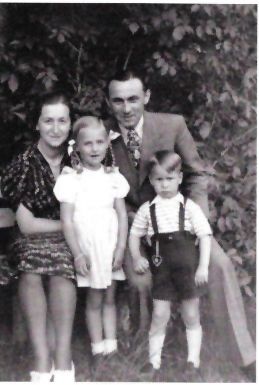
None of this matters much, right? Shouldn’t writers be free to do what they want to other people’s houses, to let their gardens run imaginatively to seed? Except that one of the criticisms of Sebald’s work is its deliberate lifelessness. All of his beaches are practically empty (even in Norfolk in the summer), all of his gardens are overgrown. His fiction leaves out most of the stuff we actually spend our lives on, the pleasures and worries: not just the gardens but the arguments over the remote control, the petty loving battles with our kids, the Friday night takeaways and after-work drinks. His vision of a world “collapsing beneath the burden we placed upon it” is based less on lived experience, and more on a kind of literary style.
In that sense, this biography reflects its subject—we learn almost nothing about Sebald’s home life. He met his wife in a beauty salon in Bavaria, where he saw her through the window. She struck his schoolfriends as beautiful and sophisticated and… silent. They married several years later, after he got a job at the University of Manchester. At some point a daughter was born. We hear nothing more, except a few suggestive details: that Sebald, as a young academic feeling his way in the department, must have gone to dinner parties without his wife. Later, when they bought the Old Rectory in a village outside Norwich, which stretched their budget to the limit, he had to do much of the refurbishment himself—“roof-tiling, floor-laying and taming the wild garden”—a rare glimpse of the work that goes into making a family life.
The second discrepancy between story and source is that the real Henry Selwyn wasn’t Jewish. “He was born in Cheshire, not Lithuania.” This troubles Angier more. Sebald’s great subject, after all, was the way Jewish trauma led to a permanent sense of displacement, which nothing, no attempts at assimilation, could repair. Yet many of the models for his Jewish characters—including his old landlord at Abbotsford who, like his fictional counterpart, killed himself with a gun—were not Jewish. Their traumas were personal, not world historical. It bothers her, too, that to make the stories seem as real as possible Sebald often used photographs, which he faked. “That’s the last thing anyone should suggest about the Holocaust, isn’t it?” one of her sources asks. “That anything about it could be fake?”
And yet you don’t have to look far to see the real source of Sebald’s obsession with emigrants—his own life. He took German studies at the University of Freiburg, which was heavily conservative and staffed by old Nazis. Sebald managed to find an island of counterculture, a student house on Maximilianstrasse, which became the centre of his social and intellectual existence. There he met future writers and artists who pushed him and measured themselves against him; and around the same time he acquired the nickname Cocky, which sits oddly with the image of the man he became, the great German novelist hiding his unhappiness behind a moustache. Sebald never liked his given name, Winfried, which sounded too old-style German to him. One explanation for the name he eventually adopted in England, Max, is that it referred to the street he used to live on in Freiburg.
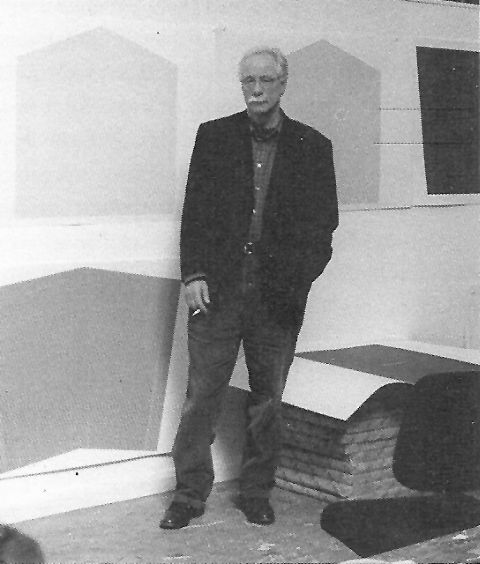
Even so, after two years, he left and moved in with his sister and her husband in (confusingly enough) Fribourg in Switzerland, where he finished his degree. His dissertation “savagely” attacked the more or less “forgotten” satirical playwright Carl Sternheim. He was trying to justify his conviction that aesthetics and ethics are linked, and that the mistakes writers make in life will show up in their work. In Sternheim’s case, the mistakes were connected to his half-Jewishness. His comedies, writes Angier, “satirised the bourgeoisie of the Wilhelmine era, which was the peak of conservatism, militarism and Junker domination in Germany. But his problem, the young Sebald argued, was that he had not only assimilated into that society, as many Jews were doing at the time: he had radically assimilated, abandoning his Jewish roots, and more than half taking on the flawed value system he was claiming to criticise.”
Years later in his own fiction, Sebald’s heroes would consistently fail to assimilate. It seems reasonable to suggest that his sympathy for the trauma of German Jews, for the displacement they suffered (if they were lucky), grew out of his own sense of displacement as a Nazi’s son, who left his country because he couldn’t come to terms with what it had done. After Fribourg, he took the Manchester job, and more or less stayed in England until he died in a car accident at 57 in 2001. But he refused to assimilate, and in spite of his fluent English continued to work (and battle) with an English translator for his books, Michael Hulse. I even heard him once, shortly before his death, give a lengthy reading in German from Austerlitz at the Royal Festival Hall.
“On some level, the refusal to assimilate involves a refusal to engage with the world, and people, around you”
On some level, the refusal to assimilate involves a refusal to engage with the world, and people, around you—and accounts for the absence of “ordinary life” in his novels. Sebald was an obsessive rewriter and started each new draft of a section from scratch, producing thousands of manuscript pages for every novel. Part of his great achievement was his purity of style. There are very few bum notes. Each phrase and sentence seems classically Sebaldian; they all bear the stamp of their maker. But the strong literary flavour comes at a price, too. In one of his discarded drafts, Angier finds a reference to an encounter with a jogger on Dunwich Heath in Suffolk, “fantastically dressed, in white silk pantaloons and ‘self-propelled’ running shoes. The narrator learns that he is a chief steward on Virgin Atlantic, and his Virgin Atlantic T-shirt says Get airborne. All that matters to him, he says, is to leave tracks that no one can see all around the world.” It’s a classic Sebald trope, the trackless wanderer, but it doesn’t quite survive contact with the in-flight T-shirt. “That he cut this embarrassing attempt at realism and modernity,” Angier comments, “shows that he recognised how dangerous they were to his particular art.”
What will posterity do with him? Speak, Silence makes a strong case for Sebald’s greatness, although the tone of critical detachment slips a little towards the end—the last few chapters feel more like a canonisation. The secret to his sorrow, Angier argues, is that “he was born without a skin, as his mother prophetically said.” He had “an absolute inability to protect himself from experience,” a kind of “mirror-touch synaesthesia: a state in which people experience in themselves what they see others experiencing.”
I’m not convinced. Especially since what emerges in his work is a world in which everybody’s experiences sound like Sebald’s; he totally subsumes other perspectives into his own. He seems to have had an extraordinary ability to create an atmosphere around him that induced people to address him in the style in which he wanted to perceive the world. But there is also clearly a deep appetite in other people for that style. At a grocery store in Austin, Texas, I once noticed the check-out clerk had a copy of The Rings of Saturn next to the till. I asked him about it, and he said, “It just scratches me where I itch.”


